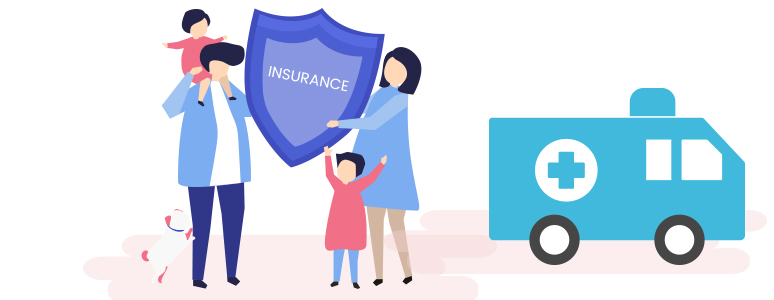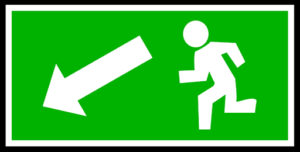Most people have some type of insurance. But not everyone understands how it works or the different types of insurance available.
This article will go over what insurance is, how it works, and the different types of insurance out there to help you save money and get the coverage you need.
Let’s get started!
What is insurance?
Insurance is a written contract (in the form of a policy) between you and an insurance company that protects you against unexpected financial losses.
Depending on the type of insurance you get, the insurance policy will pay you (or beneficiaries that you designate) after a qualifying event.
How does insurance work?
Now that you have a broad definition of insurance, let’s go over how exactly insurance policies work.
Insurance companies pool together the risk of many policyholders to lower the risk for all and make it possible for them to make payouts for large claims.
There are three core components of any insurance policy: the premium, policy limit, and deductible. Let’s go over each one:
- Premium—This is the price of an insurance policy, typically paid monthly. The premium amount is determined by your risk profile. For example, how much you pay for an auto insurance premium will depend on your driving history and how many accidents you’ve been in. Some policies might also look at how good your credit score is. But ultimately, anyone can get insurance for the right price.
- Policy limit—This is the maximum amount an insurer is willing to payout in the event of an insurance claim. This could be set per period, per loss or injury, or over the lifetime of the policy. For example, the maximum payout for a $1 million life insurance policy would be $1 million.
- Deductible—This is the amount you must pay before your life insurance policy kicks in. For example, if your health insurance policy’s deductible is $1,000 and you incur a $5,000 medical bill, you would pay $1,000 and the insurance company would pay the remaining $4,000. Deductibles apply per policy and per claim and act as a deterrent against policyholders making many small, insignificant claims. The lower the deductible, the higher your premium. A good rule of thumb is to always have an emergency fund ready to cover your deductible if needed.
Some insurance policies may also include the following components:
- Exclusions—These are events or scenarios not covered under the insurance policy. Make sure to look for any exclusions in the small print of your policy.
- Waiting period—This is a period you must wait before you can make an insurance claim. Some policies have these in place to deter people from getting insured with plans just to make a claim (e.g. getting dental insurance to cover an upcoming dental appointment).
Different types of insurance
Now that you know the basics behind how insurance works, here are some of the most common types of insurance out there:
- Health insurance—This helps cover your medical bills and sometimes prescription drugs. Most employers offer health insurance, but it’s often also available through federal government programs.
- Life insurance—This is to pay beneficiaries that you designate (usually family) a benefit once you die. It’s a way to protect those that financially depend on you. There are two types of life insurance: term and whole life insurance. Term life insurance covers you for a set period (usually 10, 20, or 30 years) and is more affordable, while whole life insurance covers you permanently, is more expensive, and has a cash value component that you can withdraw as part of your retirement.
- Disability insurance—This is to help replace your income should you have an injury that leaves you disabled and unable to work. Disability insurance comes in short- and long-term forms. Short-term disability insurance lasts 3 to 6 months and is often offered by employers, while anything beyond must be covered by long-term disability insurance that you get on your own. Long-term disability insurance typically replaces anywhere from 40% to 70% of your income.
- Auto insurance—This protects you in case of a car accident. Many governments require you to have at least liability auto insurance, which covers damages and injuries that you cause others. But there are also many other types of auto insurance, including uninsured/underinsured motorist (UM) coverage, personal injury protection (PIP), medical payment coverage, collision coverage, comprehensive coverage, and learner driver coverage.
- Homeowner’s or renter’s insurance—This covers your home and your possessions in case of damage or loss. Most mortgage companies require you to have homeowner’s insurance, and some landlords require you to have renter’s insurance.
When should you buy insurance?
If you’re wondering when you need to get insurance, the answer is simple. Get it if it falls into any of the following three categories:
- The insurance is required by law.
- The insurance is required by your lender (e.g. a mortgage company).
- You wouldn’t be able to recover from the financial loss that the insurance covers against.
The bottom line
Ultimately, insurance is all about displacing risk. It’s removing the risk from you and putting it on an insurance company. That’s what you’re paying for. You may not ever need to make a claim, but you can rest easy knowing an accident won’t ruin your (or your loved ones’) finances.
To choose an insurance policy, shop around online for the best rate, coverage, reviews, etc. Look out for deals. Some insurance companies that offer multiple types of insurance (like auto and home insurance) will bundle two policies together for a discounted rate.
If you have trouble choosing a policy, consult a professional insurance broker. Finding the right insurance may take some time, but it’s well worth it.






Be First to Comment